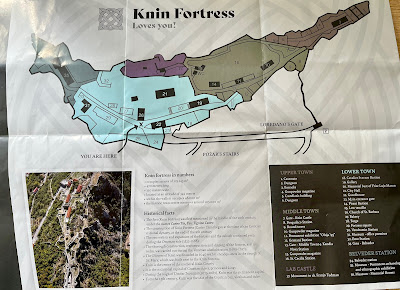My last blog from my trip to Croatia covers the castle at Knin. This is a bit off the tourist route, situated inland near the Bosnian border. However, it's not far from the excellent Krka National Park with its stunning waterfalls, if you need to sell it to your partner!
It was started by the medieval Croatian state in the 9th century. Then extended by the Ottomans before reaching its final outline during the Venetian occupation from 1688-1797. Even then, internal buildings were added by the Austro-Hungarians.
You can't miss the castle as you enter the town, as the hill dominates everything. The town is otherwise pretty forgettable, unless you are a railway buff, as it is an important junction with extensive sidings and a locomotive depot.
It is huge. They claim it is the second largest in Europe, covering 48,000 square metres within the walls. They are doing some restoration work to make it a little easier to walk about, but the entrance is accessible by car, although parking is limited. The map below gives an idea of the scale, and I spent an hour or so walking around. There is a restaurant at the end, which on a warm day was very welcome.
The views all around are spectacular, particular towards the mountains on the border.










Absolutely beautiful - a lovely castle (and one, I imagine, that no one would want to assault. 😎
ReplyDeleteCheers,
Geoff